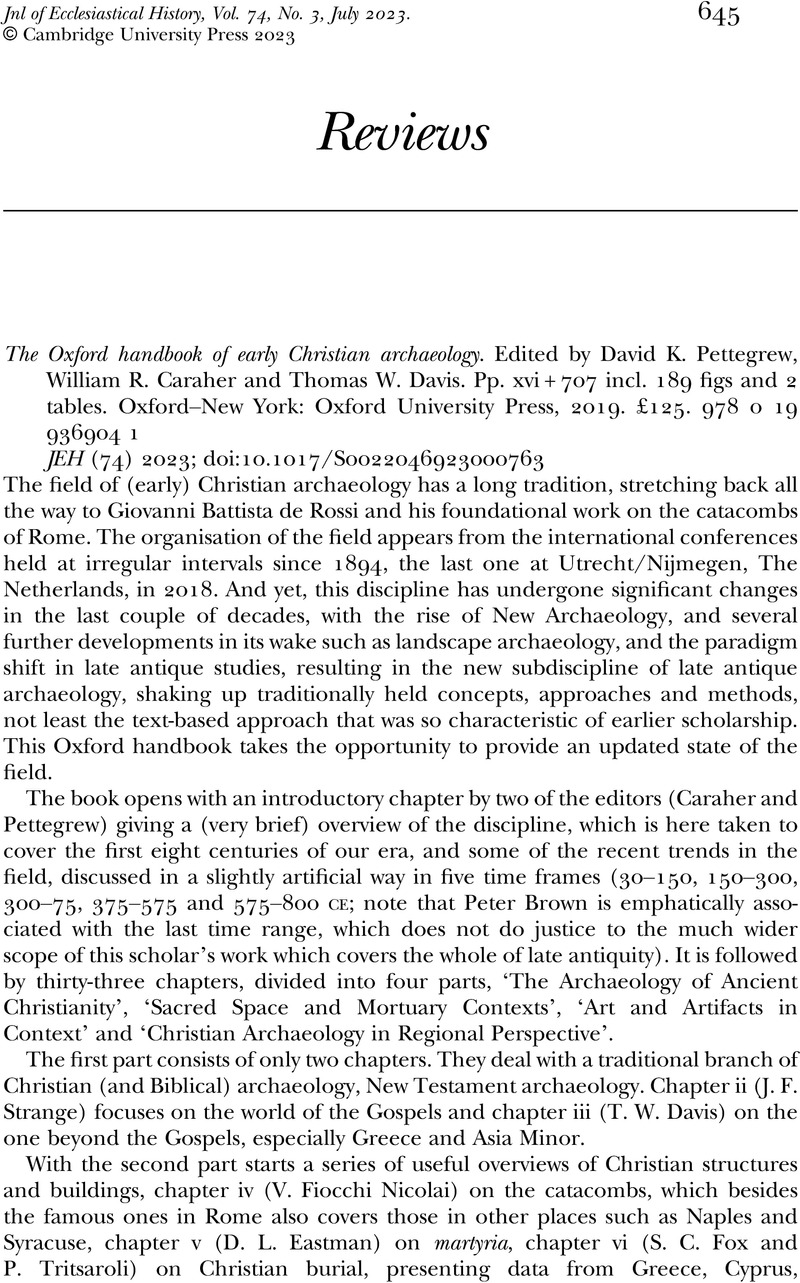No CrossRef data available.
Article contents
The Oxford handbook of early Christian archaeology. Edited by David K. Pettegrew, William R. Caraher and Thomas W. Davis. Pp. xvi + 707 incl. 189 figs and 2 tables. Oxford–New York: Oxford University Press, 2019. £125. 978 0 19 936904 1
Review products
The Oxford handbook of early Christian archaeology. Edited by David K. Pettegrew, William R. Caraher and Thomas W. Davis. Pp. xvi + 707 incl. 189 figs and 2 tables. Oxford–New York: Oxford University Press, 2019. £125. 978 0 19 936904 1
Published online by Cambridge University Press: 05 July 2023
Abstract
An abstract is not available for this content so a preview has been provided. Please use the Get access link above for information on how to access this content.

- Type
- Reviews
- Information
- Copyright
- Copyright © Cambridge University Press 2023



